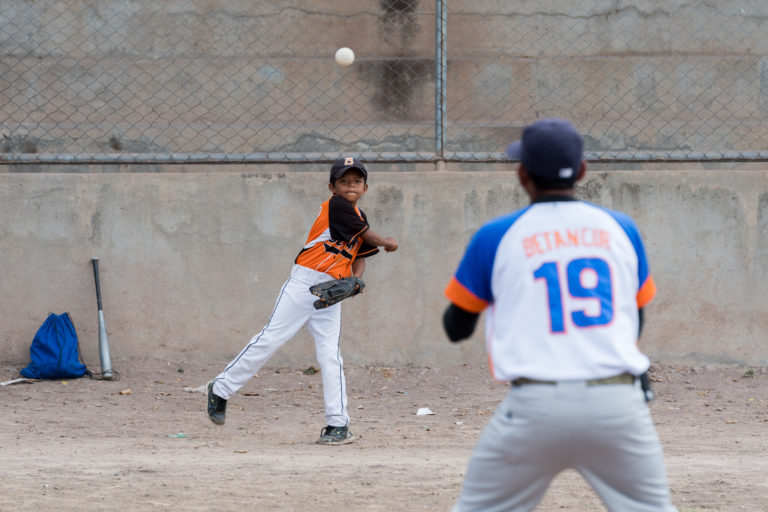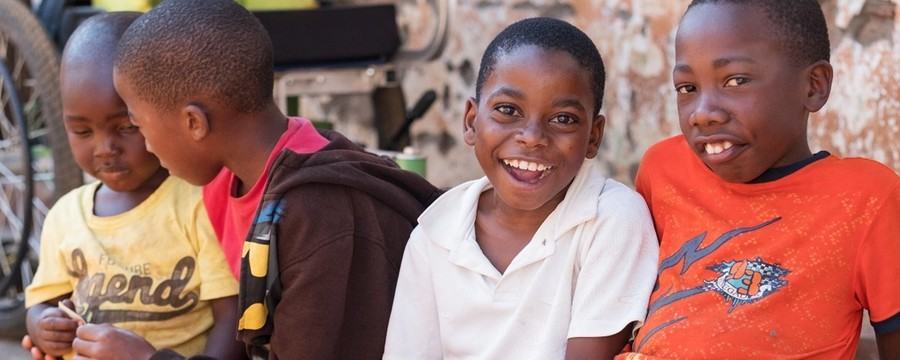How to Safeguard Children with Developmental Disabilities

Share this step
Violence
Children with developmental disabilities are at a much higher risk of experiencing violence than non-disabled peers, often as a result of discrimination, stigma or a lack of social support.1
Abuse and violence can be physical, psychological, emotional, structural or sexual in nature. It can involve neglect, harassment and exploitation. In some instances, children with developmental disabilities may experience severe forms of violence, such as forced sterilisation, electric shock therapy or involuntary medical treatment and experimentation. Overburdened parents may also abuse their children out of frustration (e.g. shouting at them) or in an attempt to ‘protect’ their children with disabilities (e.g. chaining them against a table when leaving the house, forced sterilisation).2
A systematic review and meta-analysis of the available literature (most of which is from high-income countries) estimated that one in four children with disabilities experience violence. When compared with non-disabled peers, evidence has shown that children with disabilities are 3.7 times more likely to be victims of violence and 3.9 times more likely to be emotionally abused.1,3 The risk of violence depends on impairment type. For children with an intellectual disability, their risk of sexual violence is 4.6 times higher than other children without disabilities.1 One study from the USA demonstrated that children with behaviour disorders are 7 times more at risk of neglect and physical abuse.3 The same study also showed that children with speech and language impairments are 5 times more at risk of physical abuse, 3 times more at risk of sexual abuse and 7 times more at risk of emotional abuse.2
Children with developmental disabilities can experience violence in every setting, including hospital, school, home or elsewhere in the community. The risk of violence is particularly high in institutional care and in the home. Institutions can perpetuate the exclusion of children with disabilities from society, and enable abuse, neglect, physical and psychological abuse, and sexual violence, which has been documented within these facilities.2 Similarly, high dependency on caregivers gives perpetrators the opportunity to abuse children with developmental disabilities in the home. This applies particularly to resource poor settings, where caregivers themselves may be financially dependent on others.4 Abuse and violence also hold a gender dynamic and girls with disabilities often experience discrimination based on gender and disability.5 Girls with disabilities are particularly vulnerable to structural, emotional and sexual violence in institutions and the home.
 Maynor (12) playing baseball with his trainer Jorge in Nicaragua. © CBM/argum/Einberger
Maynor (12) playing baseball with his trainer Jorge in Nicaragua. © CBM/argum/Einberger
Safeguarding and child protection
Lack of knowledge and stigma around disability can contribute to the high levels of violence experienced by children with developmental disabilities. Parents or teachers may use violence as a form of discipline, or out of frustration, when they lack appropriate coping strategies. Sensitisation about disability is therefore important for reducing violence perpetrated against children with disabilities. For example, parents may require support to understand their child’s disability and to develop strategies for communicating and working with their child. Similarly, professionals who work with children – including educators, healthcare workers and child protection officers – need training on how to prevent, identify and respond to violence amongst children with disabilities. Community- or school-based sensitisation campaigns in turn may reduce violence and misconceptions of disability amongst peers and others in the community.6
Community sensitisation programmes need to improve the knowledge about disability and reduce stigma, whilst policies and legislation need to be scrutinised in terms of their protection and promotion of the rights of children with disabilities. Disability-inclusive policies and legislations need to be and effectively implemented to ensure that violations of the rights of children with disabilities are outlawed, monitored and prosecuted.
Child protection and other safeguarding services need to be inclusive of children with developmental disabilities. Although the instances of abuse and violence are incredibly high amongst children with developmental disabilities, most cases are not reported and if reported, rarely lead to successful prosecution. Child protection systems fail to account for the needs of children with developmental disabilities who face environmental, communication and attitudinal barriers to justice. These barriers can arise from stigmatised attitudes, inadequate financial or human support, or inaccessible infrastructure and communication services. For example, child protection services in many settings have few to no resources or strategies for working with children with communication challenges.6,7 In addition, the perpetrator can be a parent or caregiver or someone close to the parent. Many children with developmental disabilities therefore struggle to report violence unless child protection services provide appropriate support (e.g. alternative and augmentative communication devices, trauma counselling). As a consequence, many children are isolated from services and face barriers to reporting and ending abuse.
 © Holt International
© Holt International
Programme example
An example of a national safeguarding campaign for children with disabilities comes from the National Society for the Prevention of Cruelty to Children (NSPCC) in the UK. In their report (found in the ‘See Also’ section below) the NSPCC outline the problem, the UK’s policy context and actions to take forward. Strategies to take forward include:
- Raising awareness about abuse and challenge attitudes – e.g. basic awareness training for professional groups across health, education etc.
- Improving awareness amongst disabled children about abuse and help-seeking – e.g. help children improve vocabulary about violence and abuse so they can communicate concerns and develop peer support in schools.
- Ensuring child protection and criminal justice systems work effectively for disabled children – e.g. inspection, review and consultation activities between agencies and disabled young people and organisations.
Evidence-based campaigns such as these are needed in all countries to encourage change across key stakeholders, such as policy-makers and statutory agencies (health, education and criminal justice).
Twin-track approach
As we’ve discussed throughout this course, there is a need for a twin-track approach when considering interventions to both prevent and respond to violence against children with developmental disabilities. As well as adaptations to existing mainstream programmes and services to promote equal access, disability-specific interventions may be required, such as disability sensitisation in communities and schools.
 Patience (11), Uganda, is often seen singing. © CBM
Patience (11), Uganda, is often seen singing. © CBM
Role of the healthcare professional
Healthcare professionals need to be aware of the signs of violence and abuse, so they can identify vulnerable children in need of support and safeguarding.
Signs of violence or abuse:
- Changes in behaviour – aggression, anger, depression, anxiety
- Loss of self-confidence
- Self-harm
- Unexplained injuries – bruises, fractures, burns
- Poor hygiene
- Poor school attendance
- Parental behaviour – lack of concern, harsh physical discipline, berates child with negative terms
Healthcare professionals have a unique position and insight into local family life, and have specific opportunities to educate children and their families on the topic of violence and safety during routine healthcare visits. Healthcare professionals have knowledge of local referral systems and can link with the local social work and justice system. Healthcare professionals may also discover injuries and new behaviours that indicate abuse or violence, they therefore have the responsibility to act quickly and report concerns about a child’s safety.
Healthcare professionals need to be trained on the high risk of violence experienced by children with developmental disabilities, so they can address this issue in their setting. Healthcare organisations should have established referral pathways for suspected cases of abuse or violence. When developing or updating these pathways, the unique needs of children with developmental disabilities (and their increased vulnerability to violence) must be considered.
Strategies need to protect victims so we do not do more harm than good. These strategies need to specifically describe how to deal with complex cases, such as abuse/violence committed by parents or parents who also suffer from domestic abuse/violence while the child is being abused. Referral pathways also need to clarify the appropriate agency and authority and how to follow official procedure.
Discussion
- How else do you think a healthcare professional can help reduce stigma and violence against children with developmental disabilities in their local community?
- How can a healthcare professionals promote the safety of children with developmental disabilities?
- What support do healthcare professionals need to do this?
Share this
Integrated Healthcare for Children with Developmental Disabilities

Integrated Healthcare for Children with Developmental Disabilities


Reach your personal and professional goals
Unlock access to hundreds of expert online courses and degrees from top universities and educators to gain accredited qualifications and professional CV-building certificates.
Join over 18 million learners to launch, switch or build upon your career, all at your own pace, across a wide range of topic areas.
Register to receive updates
-
Create an account to receive our newsletter, course recommendations and promotions.
Register for free







